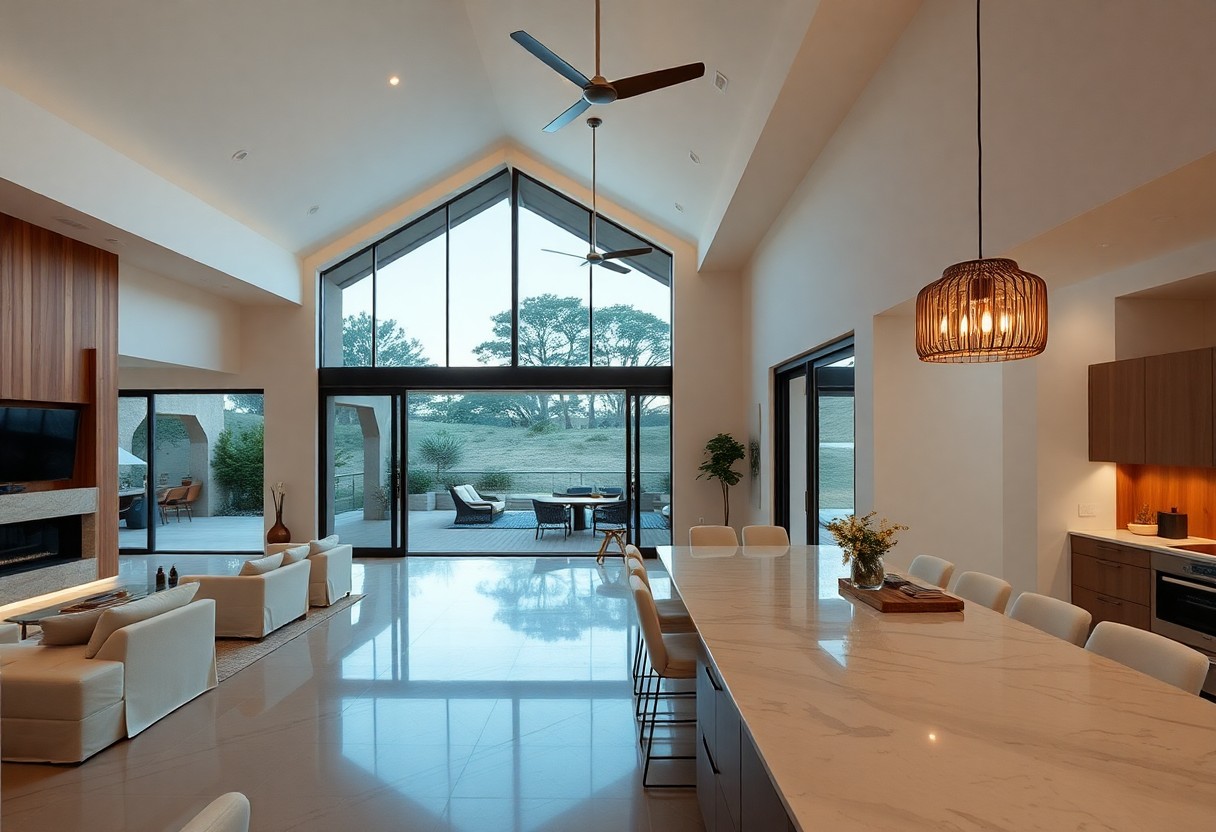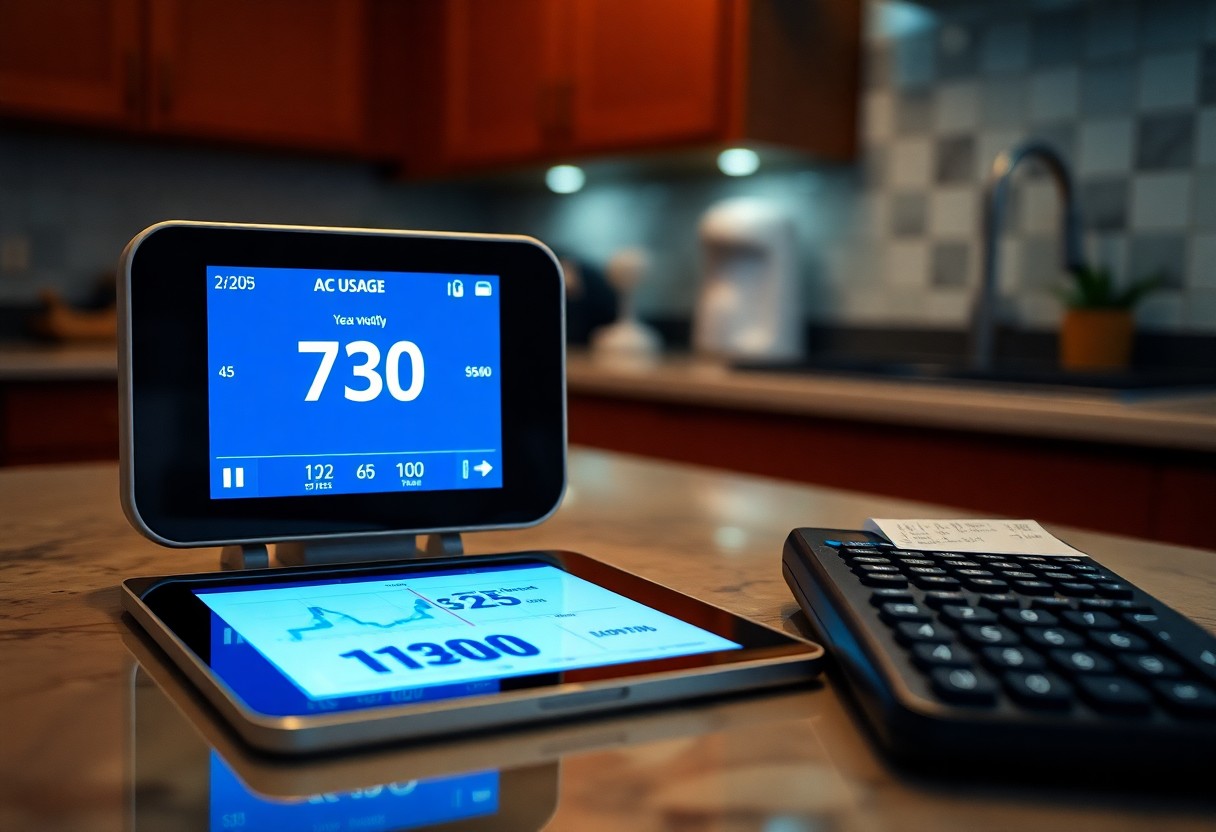Most A-listers in Australia, like Chris Hemsworth, prioritize comfort and style, especially in their homes. This blog post takes you inside Hemsworth's stunning Byron Bay mansion, revealing not just its breathtaking design but also the surprisingly choice of air conditioning systems that enhance your living experience. Discover the innovative solutions that celebrities choose to maintain an ideal climate, ensuring that you can benefit from their insights when selecting your own air conditioning options.

Key Takeaways:
- Chris Hemsworth's Byron Bay mansion features unique architectural elements that reflect local aesthetics.
- Australian celebrities prioritize eco-friendly and energy-efficient air conditioning solutions in their homes.
- The use of natural ventilation is common in luxury Australian residences to reduce reliance on traditional AC systems.
- High-tech smart home systems are integrated for climate control, enhancing comfort and convenience.
- Outdoor living spaces are designed to complement indoor areas, showcasing the Australian lifestyle and climate.
Location and Architecture
Overview of Byron Bay
Byron Bay, a coastal gem in New South Wales, is renowned for its stunning beaches, natural beauty, and vibrant community. With a population of around 9,000, it attracts visitors and residents alike, seeking a laid-back lifestyle enriched by art, music, and outdoor activities. The temperate climate and breathtaking landscapes contribute to its allure as an ideal locale for celebrities and influencers, including Chris Hemsworth, who appreciate the blend of luxury and relaxation this region has to offer.
Architectural Style and Design Features
Hemsworth's mansion in Byron Bay showcases contemporary architecture with a strong emphasis on sustainability. Its design incorporates large expanses of glass, allowing for abundant natural light, while seamlessly blending indoor and outdoor spaces. The use of timber and stone in construction reflects the natural surroundings, creating a harmonious environment that feels both luxurious and inviting. Unique features like infinity pools and eco-friendly amenities further enhance the home's appeal, aligning perfectly with Byron Bay's ethos of environmental consciousness.
The architectural choices in Hemsworth's mansion highlight a commitment to integrating modern aesthetics with the surrounding landscape. You'll notice how the natural materials used in the structure create an organic feel, while floor-to-ceiling windows provide panoramic views of the ocean and hinterland. Outdoor living spaces, complete with expansive decks and landscaped gardens, encourage a lifestyle intimately connected to nature. Sustainable technologies, such as solar panels and rainwater harvesting systems, underline the home's eco-friendly approach, making it a model for contemporary coastal living.

Exclusive Amenities
Your experience at Chris Hemsworth's Byron Bay mansion extends far beyond traditional luxury into a realm of exclusive amenities designed for relaxation and entertainment. The property boasts a state-of-the-art home cinema, where you can enjoy the latest films in ultimate comfort. A full-sized gym caters to fitness enthusiasts, while a private spa ensures rejuvenation after a long day. Outdoor features include a stunning infinity pool and a rooftop terrace, perfect for basking in the sun or hosting intimate gatherings against a breathtaking backdrop.
Indoor and Outdoor Living Spaces
The indoor and outdoor living spaces seamlessly blend comfort and sophistication, reflecting the essence of Australian coastal living. Expansive sliding doors open to a sprawling deck, connecting the living area to the verdant surroundings. Each room is designed with earthy tones and natural materials, promoting a sense of tranquility. Cozy fire pits and shaded lounges offer inviting spots to unwind, whether you're enjoying a morning coffee or an evening sunset.
Recreational Facilities
Recreational facilities at this mansion include a basketball court, a private gym, and an exquisite infinity pool overlooking the ocean. Each facility is tailored to cater to different interests, ensuring a well-rounded lifestyle. You can enjoy a game of hoops or engage in yoga sessions, all while surrounded by lush greenery and pristine views.
AC Systems and Energy Efficiency
Energy efficiency takes center stage in the AC systems of luxury homes like Chris Hemsworth's. Tailored to fit the climate of Byron Bay, these systems often feature zoning capabilities, allowing you to optimize climate control based on usage patterns, thereby significantly reducing energy consumption.
Smart AC Technology
Smart AC technology enhances your comfort while being environmentally responsible. Advanced systems can be controlled remotely through smartphones, enabling you to adjust temperatures according to your schedule, ensuring energy is not wasted when you're away.
Renewable Energy Solutions
Integrating renewable energy solutions in Byron Bay mansions maximizes sustainability. Solar panels harness the abundant sun, providing clean energy to power your AC systems, thus reducing reliance on grid electricity.
By investing in renewable energy solutions, you not only lower your carbon footprint but also save on energy bills. Many homes in the region have installed solar panels that can cover a significant portion of their energy needs, with some systems capable of generating more energy than the household consumes, allowing for a sustainable and cost-effective living environment. This shift towards renewability aligns perfectly with the eco-conscious lifestyle prominent in Byron Bay.
Interior Design Choices
In Chris Hemsworth's Byron Bay mansion, every design element reflects a harmonious blend of luxury and nature. The spacious layout accentuates openness, while large windows invite stunning views of the Australian landscape. Earthy color palettes dominate the interiors, complemented by minimalist furniture that enhances a serene, sophisticated atmosphere. Carefully chosen artwork and unique decor pieces further amplify the mansion's character, ensuring that each room tells its own story, creating a personalized retreat amid the beauty of Byron Bay.
A-Listers' Personal Touches
Your favorite celebrities definitely leave their mark on their spaces. Hemsworth's home features custom-built elements like a handcrafted dining table that fosters family gatherings and a personal gym adorned with memorabilia from his film career. Each piece seamlessly weaves together their life experiences and passions, making the space truly one-of-a-kind.
Sustainable Materials
Sustainability plays a significant role in Hemsworth's design choices. Using eco-friendly materials, such as reclaimed wood and energy-efficient fixtures, reduces the home's environmental footprint while showcasing a commitment to responsible living. This approach not only elevates the visual appeal but also aligns with a growing trend among A-listers prioritizing environmental consciousness in their residences.
Reclaimed wood, sourced from local suppliers, enhances the charm of the mansion while promoting recycling and reducing waste. The installation of energy-efficient windows and smart home technology optimizes energy consumption, decreasing reliance on non-renewable resources. Such choices not only contribute to the aesthetic but also provide a significant reduction in energy costs. More than just trends, these sustainable practices reflect a lifestyle commitment to preserving the unique beauty of Byron Bay for generations to come.
Landscaping and Outdoor Spaces
In Chris Hemsworth's Byron Bay mansion, the landscaping seamlessly integrates with the natural beauty of the surroundings, creating a serene oasis. Lush greenery and native plants enhance privacy while showcasing a vibrant palette of colors throughout the year. Every outdoor space is intentionally designed to invite relaxation and enjoyment, showcasing the best of Australian coastal flora.
Garden Design and Features
The garden boasts a mix of local species and exotic plants, meticulously curated to thrive in the coastal climate. Pathways lined with stones lead you through landscaped gardens, accented by artful arrangements of succulents and flowering shrubs, providing a landscape that changes with the seasons and offers visual interest year-round.
Outdoor Entertainment Areas
Outdoor entertainment is elevated at Hemsworth's residence with spaces designed for both intimate gatherings and larger social events. The areas feature comfortable seating arrangements, fire pits, and outdoor kitchens, blending functionality with aesthetic appeal. The choice of materials complements the natural surroundings, ensuring a seamless transition from indoor luxury to outdoor relaxation.
Equipped with a state-of-the-art outdoor kitchen and a spacious dining area, the entertainment spaces are perfect for hosting summer barbecues or cozy gatherings under the stars. With an infinity pool that offers breathtaking views of the coastline, these areas invite you to indulge in the laid-back Australian lifestyle while enjoying the scenic beauty that surrounds you. Thoughtful lighting enhances the atmosphere, allowing for enjoyable evenings that stretch into the night.
Celebrity Neighbors
A-Listers in Byron Bay
Living in Byron Bay means rubbing shoulders with some of the biggest names in entertainment. Your surroundings include A-listers like Zac Efron, Miranda Kerr, and even Paul Hogan, creating an elite enclave that attracts more than just curious fans. This celebrity concentration not only turns Byron Bay into a magnet for the rich and famous, but also enhances the local culture and lifestyle, adding a touch of glamour to everyday life.
Impact on the Community
The presence of celebrities in Byron Bay significantly influences the local community, both economically and socially. While some locals appreciate the increased tourism and local business opportunities, others express concerns about the rising cost of living. Many A-listers, like Hemsworth, contribute positively by supporting local charities and initiatives, which showcases their commitment to the area and helps bridge the gap between fame and community.
With the influx of celebrities, Byron Bay has seen a boom in upscale shops, restaurants, and services catering to high-end clientele. This growth creates jobs and stimulates the local economy, yet also raises property prices and alters the character of the area. Some residents may feel a loss of the laid-back, unpretentious vibe once synonymous with Byron Bay. Nevertheless, many local organizations benefit from celebrity influence, with events often drawing significant funding and attention that helps to preserve and enhance community resources.
Final Words
Conclusively, exploring the AC choices of Chris Hemsworth's Byron Bay mansion reveals the distinctive preferences of Australia's celebrities in balancing comfort and environmental sustainability. As you consider your own home, these insights can guide your decision-making, allowing you to enhance your living space while staying eco-friendly. From ingenious designs to energy-efficient solutions, you can draw inspiration from Hemsworth's modern approach, ensuring your choices reflect both luxury and responsibility.
FAQ
Q: What features make Chris Hemsworth's Byron Bay mansion unique?
A: The mansion boasts a stunning blend of modern design and natural surroundings, including large open spaces, panoramic ocean views, and eco-friendly materials that reflect the local environment.
Q: What types of air conditioning systems are used in Hemsworth's mansion?
A: The mansion utilizes advanced ducted air conditioning systems that provide efficient cooling and heating, along with split systems in specific rooms for personalized comfort.
Q: How does the mansion's location impact its cooling solutions?
A: Located in Byron Bay, the mansion benefits from coastal breezes, reducing the need for extensive air conditioning while enhancing indoor comfort with natural ventilation methods.
Q: Are there any sustainability features related to the AC systems?
A: Yes, the air conditioning systems are designed with energy efficiency in mind, utilizing smart technology to optimize energy use and reduce overall environmental impact.
Q: What can other homeowners learn from Hemsworth's mansion regarding AC choices?
A: Homeowners can explore the balance between aesthetics and function by integrating eco-friendly options and optimizing natural airflow, which can lead to lower energy costs and improved comfort.







